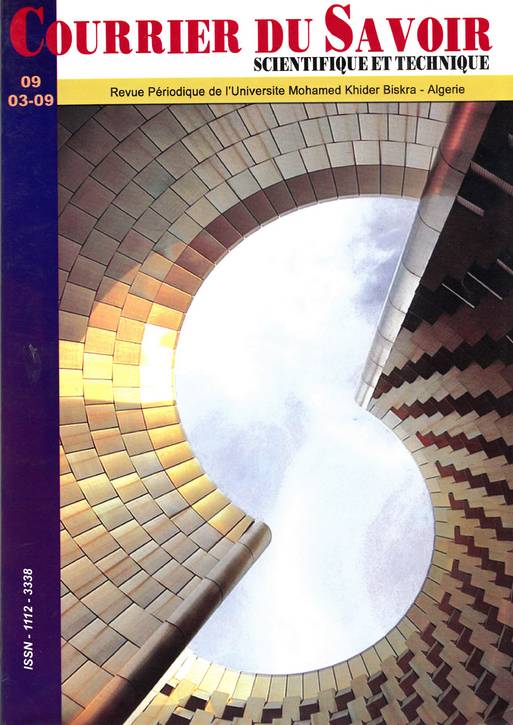EXPERIENCING URBAN SPACES: ISOVISTS PROPERTIES AND SPATIAL USE OF PLAZAS
Résumé
This paper starts from the assumption that a good space is a used space and that people’s behavior, movement and use, is
primarily correlated to the potential of both the spatial structure and the visuals fields created by the spatial configuration:
visibility. The success is attributable to “…how well the spatial configuration fits real pattern of human behavior” (Hillier
2004). The use of space is governed by two considerations: Its attractiveness, in term movement, how easy for people to move
in; as to-movement and through-movement space, and the conduciveness of its visual properties to people’s activities. The
correlation between the spatial use and isovists proprieties of space is the focus of this paper that is divided into two parts. The
first, a comparative study of four plazas, considering the concept of natural movement about the “accessible destination” and
space intelligibility, is carried out to look for the correlation of the number of static people (sitting and standing position) and
syntactic and isovist properties of each plaza within the urban layout embedding all of them, the city center district of Biskra.
In the second, taking only one plaza, to explore why within it some parts are busy and preferred by people to others;
considering only stationary activities of sitting and standing positions. In order to grasp this deeply, believing that a space may
have many sub-settings, the plaza has been subdivided into many subspaces to look for links between visibility and spatial use.
To achieve this goal the paper relies on overlapping two methods ; behavior mapping, by people counting and spatial use
mapping, and space syntax methods initiated by Bill Hillier and visibility graph analysis by using Depthmap, a software
developed by Alasdair Turner at UCL.
Références
112
[25] Moughtin, C., 1996, Urban Design: Street and Square,
University of Nothingam
[26] Moore, G. T. and Marans, R. W., 1987, Advances in
Environment, Behavior and Design; Springer
[27] Nasar, J.L, and Heft, H., 2000, “Evaluating
Environment Scenes using dynamic versus dynamic
Displays”, Environment and behaviour, 32, 301-322
[28] Papargyropoulo, P., 2006, “park interpretations:
Explorations of the Spatial Properties and Urban
Performance of Regent’s park, London and Pedion
Areos Park Athens”, MSc thesis, The Bartlett School
of Graduate studies, University College of London.
[29] Sitte, C., 1945, The Art of Building Cities, Hyperion
Press, Conneticut
[30] Thiel, P., “Notes on the Description, Scaling, Notation,
and Scoring of some Perceptual and Cognitive
Attributes of the Physical environment in Proshansky,
H. M., Ittelson, W. H., and Rivlin, L. G., 1970,
Environmental Psychology: Man And His physical
Setting, Holt, Rinehart and Winston, New York, 593-
619
[31] Turner A., 2001, “From Isovist To Visibility Graphs: a
Methodology For The Analysis of Architectural
Space”, Environment and Planning B,28, 103-121
[32] Turner A., 2003, “Analysing The Visual Dynamics Of
Spatial Morphology”, Environment and Planning B:
Planning and Design, 30, 657-676.[1] Bafna, S., 2003, “Space Syntax: its Logic and
Analytical Techniques”, Environment Behavior, 35,
17-29
[2] Baker, R, 1968, Ecological Psychology: for studying
Human Bahavior, Stanford, Ca.: Stanford University
Press
[3] Benedikt, M.L., 1979, “To Take Hold of Space:
Isovists and Isovists Fields”, Environment and
Planning B: Planning and design, 47-65
[4] Christopher, A. 1977, A Pattern language, oxford
University press.
[5] Campos, A. M. B., 1999, “All That Meets The Eye”,
Proceedings, 2nd
International Space Syntax
Symposium, Brasilia.
[6] Campos, A. M. B., 1997,” Strategic Spaces: Patterns of
Use in Public Squares in the City of London”,
Proceedings, 1st
space syntax symposium, London,
26.1-26.11.
[7] Campos, A.M.B., Golka, T., 2005, “Public Spaces
Revised: A Study of thr relationship between Patterns
of Stationary Activities and Visual fields”,
Proceedings, 5th
International Space Syntax
Symposium, Delft.
[8] Canter, D., 1977, The Psychology of Space, New York,
St. Martin’s Press, New York.
[9] Conroy Dalton, R., 2003, “ The Secret Is To Follow
Your Nose”, Environment and Behavior.
[10] Franz, G., Wiener, J., M., 2005, “Exploring Isovist-
based Correlates of Spatial Behavior and Experience”,
Proceedings, Proceedings, 5th
International Space
Syntax Symposium, Delft.
[11] Gehl, J., 1987, Life Between Buildings, Van Nostrand
Reinhold, New York.
[12] Gifford, R., 1997, Environmental Psychology:
Principles and Practices, 77-87
[13] Groat, L. and Wang, D., 2002, Architectural Research
Methods, John Wiley and sons, Canada
[14] Hall, E. T., 1966. The Hidden Dimension, doubleday,
Garden City, N. Y.
[15] Heft, H. (1996). The Ecological Approach to
Navigation: A Gibsonian perspective. In J. Portugali
(Ed.), The construction of cognitive maps (pp. 105-
132). Dordrecht, the Netherlands: Klu- wer Academic
Publishers)
[16] Hillier, B., Hanson J, 1984, the Social Logic of Space.
Cambridge University Press, Cambridge
[17] Hillier, B., Burdett R, Peponis J, Penn A, 1987,
“Creating Life: Or, Does Architecture Determine
Anything?” Architecture and Behavior. Vol 3 P 233-
250
[18] Hillier, B., Penn A Hanson J, Grajewski T, Xu J, 1992,
“Natural Movement: or, Configuration and Attraction
in Urban Pedestrian Movement” Environment and
Planning B: planning and design, 19 ,29-66
[19] Hillier, B., 2000, “The Art of Place and the Science of
Space”, Word Architecture, 96-102
[20] Hillier, B., 1996, “Space Is The Machine, Cambridge,
University press.
[21] Hillier, B., 2004, “What it Looks from Here: questions
and conjectures about spatial cognition from a
‘syntactic’ point of view” workshop 8, Mental
Conceptions of Emergent spaces in Architectural
Design, Design computing cognition 04, 9-20
[22] Kaplan, S. and Kaplan, R. 1987, Humanscape:
Environments for People, Ulrich’s Books, Inc, Ann
Arbor, Michigan
[23] Lang, J., 1987, Creating Architectural Theories, Van
Nostrand Reinhold, New York.
[24] Montello, D. R., 2007, “The Contribution of Space
Syntax to Comprehensive Theory of Environment
Psychology”, Proceedings, 6th
International Space
Syntax Symposium, Istanbul


